Austin's Icon unveils new 3D printer, AI tool, building material at SXSW
Jason Ballard, CEO and co-founder of Austin-based construction startup Icon, envisions a future where the homebuilding process, powered by robots and artificial intelligence, could cost half of what it does today, while producing more dignified, sustainable homes.
The startup, best known for its 3D-printed homes, is attempting to tackle the challenge piece by piece, with a road map that includes lowering architecture expenses, building material costs and exploring cheaper, faster and easier construction methods.
Icon, which 3D-printed its first home at South by Southwest in 2018, has grown to employ more than 400 people and has printed more than 100 homes for less expense and at a quicker pace than traditional building methods.
The company often reveals big projects and other announcements at SXSW including 3D-printed homes, an amphitheater and an affordable housing contest. With this year’s festival, Ballard said the company has reached a culmination point and the start of its next chapter.
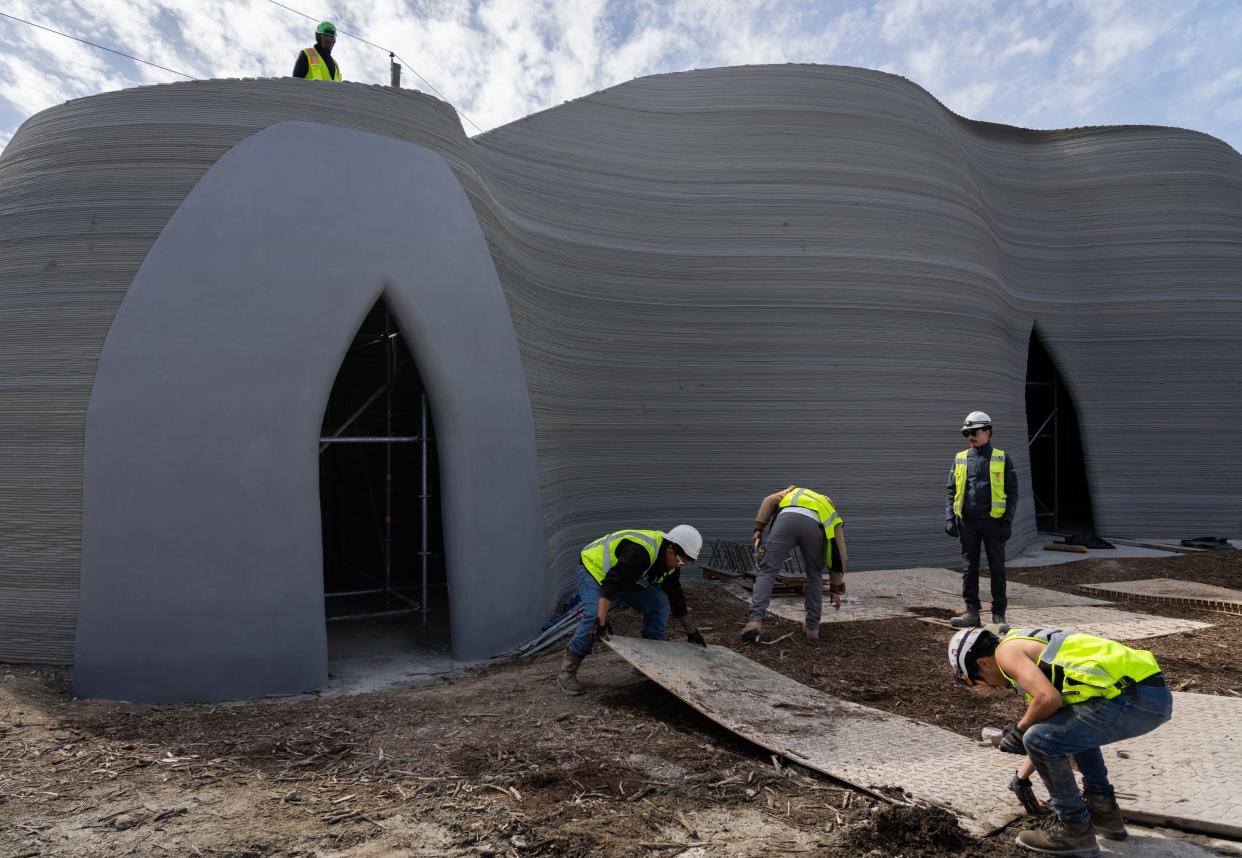
“For most of our existence, we've been talking about the potential of the technology,” Ballard said. “This is the year we are actually there. We’re going to show our receipts.”
Tuesday during SXSW, Icon held an event where the company made a host of project announcements and unveiled its newest printer, new concrete construction material, a design catalog and an artificial intelligence tool that will allow people to create their own home designs.
“It sets us up to build a more beautiful world that accords with the things people want and value, in a way that they can afford,” Ballard said.
Ahead of the festival, the CEO sat down with the American-Statesman to talk about the company’s journey to this point, its new technology and Icon's road map.
Icon reveals new printer, building material
Since its start, Icon has produced its own giant 3-D printers that are able to print housing walls layer by layer and have allowed the company to build boundary-pushing designs with elements such as curved walls. This year, the company is unveiling a new printer that will be able to not only print the walls, but also the foundation and roof of homes. Ballard said the new printer, called Phoenix, takes away some of the biggest limitations of its previous gantry-style Vulcan printer systems, while continuing to lower costs and expand design potential.
Phoenix, which looks crane-like, but is actually more like a building-scale robotic arm, has an extensive range of movement that allows it to print in a steady line, no matter the weather or design.
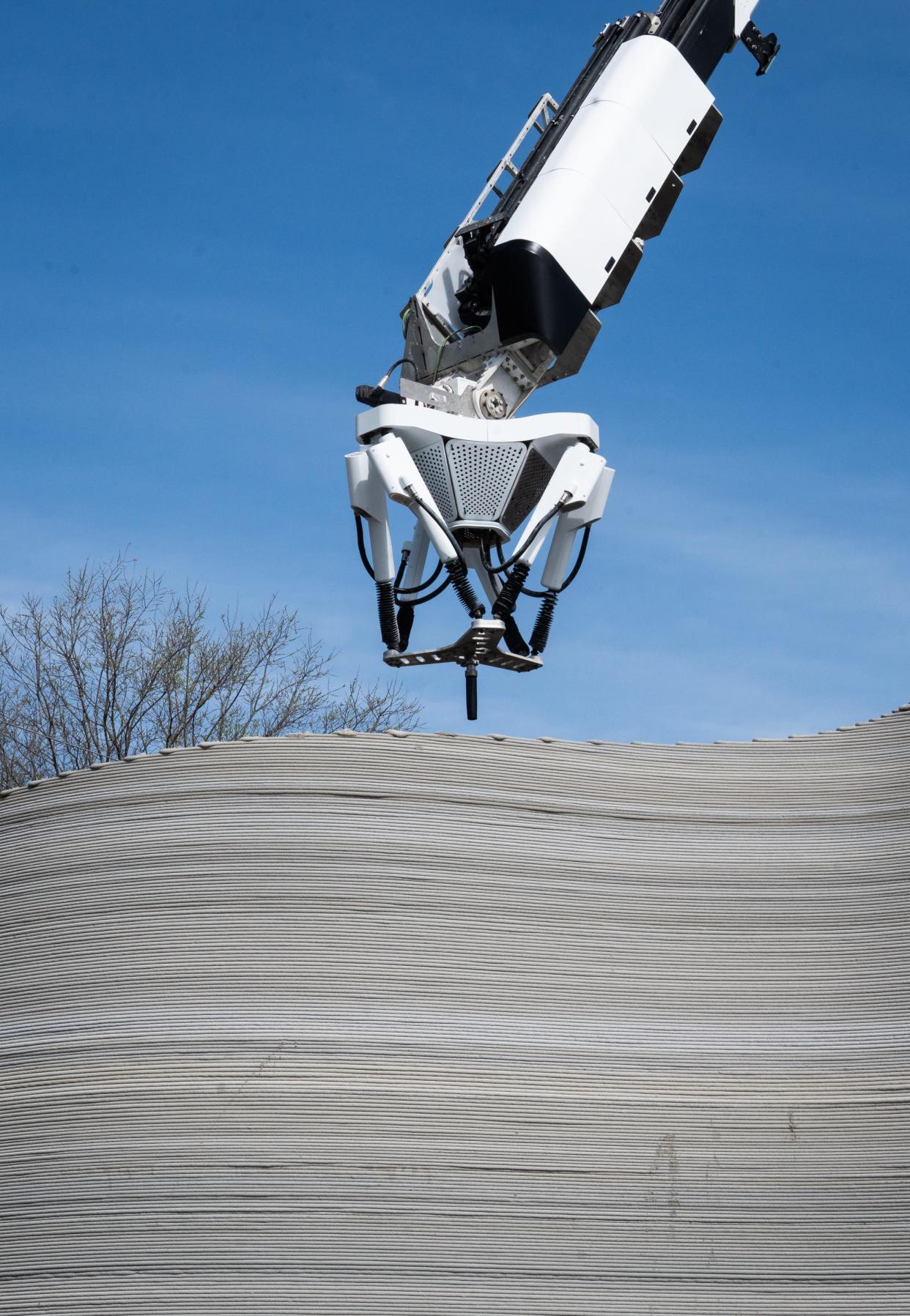
Until now, Icon has primarily been building single-family, detached housing that had to be printed linearly. The new printer, which the company will start using on projects next year, is able to print multistory structures, something Ballard said has been one of the biggest demands by customers and means Icon will now be able to address nearly all the types of residences built in America.
Melodie Yashar, Icon’s vice president of building design and building performance, said the new printing technology presents an unprecedented opportunity to construct “larger, more eccentric, and amorphous 3-dimensional forms” compared with the company’s previous printers.
“With Phoenix, we are able to deliver the full enclosure of a 3D-printed structure rather than simply the vertical wall system,” Yashar said. “The form factor of the Phoenix printer introduces new affordances for the design of multistory structures.”
Ballard said for Icon to get to the point where it can build homes for half the cost, it must tackle the homebuilding process piece by piece.
“With every new robot we bring to bear it can cut costs 10%-30% of the issue it addresses,” Ballard said.
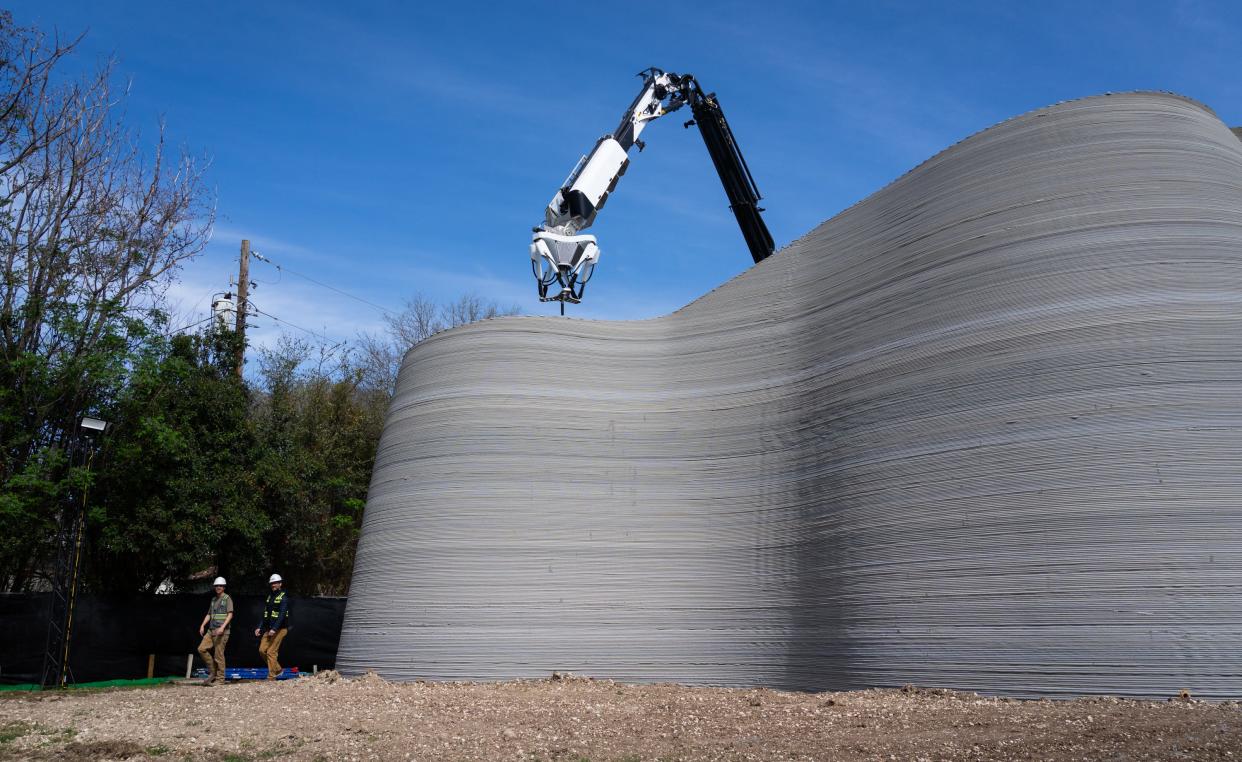
For example, Icon’s printers made building walls 30% cheaper, and the company expects similar savings on foundations and roofs using the new printer. Ballard said Icon's ability to reduce the time it takes to build walls and roofs also helps cut costs.
The company's printers have long used lavacrete, a special type of concrete developed by ICON that’s designed to be extremely durable and printable. But Ballard said concrete, while being an overall a sustainable material overall, produces a massive amount of carbon yearly because of how much we use to build.
This year, the company is unveiling a new type of concrete building material, called CarbonX, designed to reduce its carbon content, while also further cutting costs.
“To get mass adoption, finances are a real thing,” Ballard said. “You need to make it easy for people to say yes to the things that they want.”
Starting in April, Icon will be switching exclusively to the new material in all its 3-D printers, and it plans on making the concrete available to other projects and customers for construction use beyond 3-D printing.
“The printing is finally where we wanted it to be six years ago. We can do the things we wanted to do. The material is ready to scale with a responsible impact. But that doesn't mean there's not still more to do,” Ballard said.
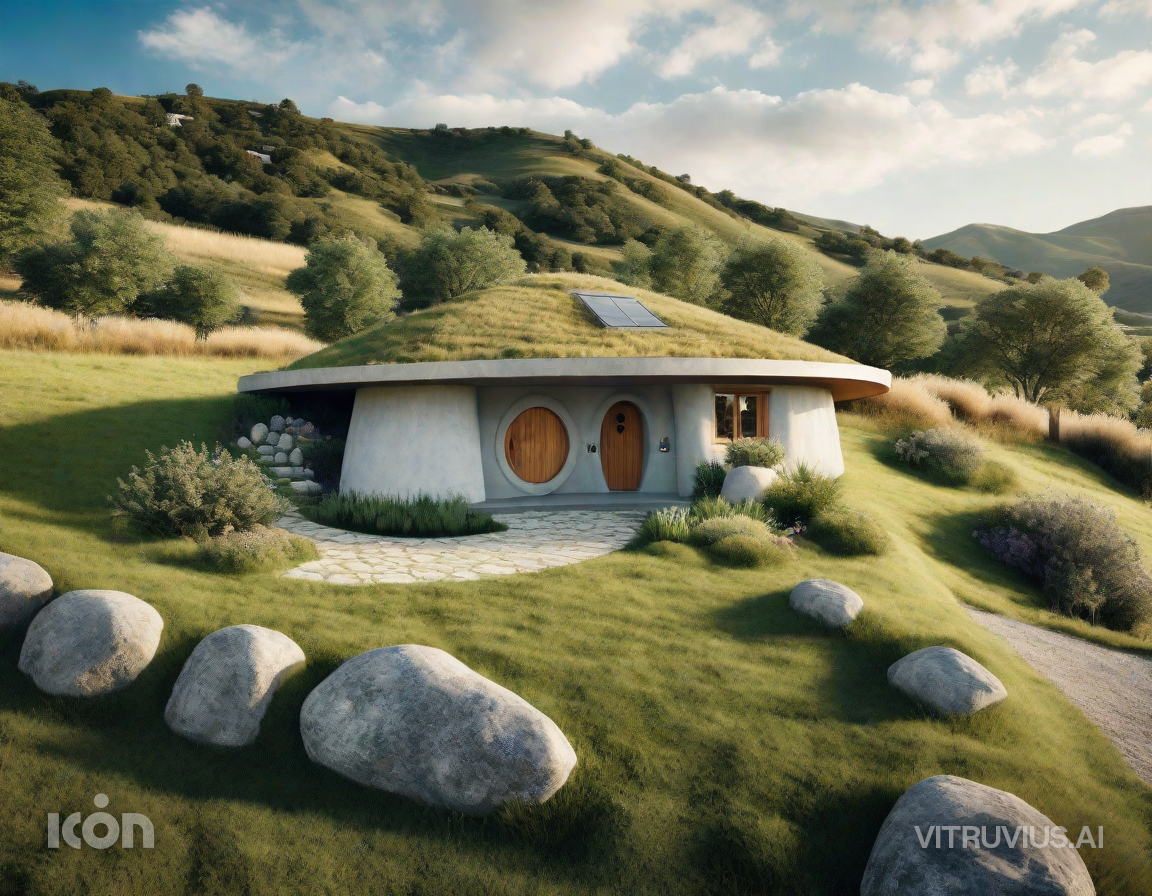
Expanding design possibilities with a new catalog, AI tool
Ballard also wants house designs to feel more human. But with the high cost of architects in the United States, he said most houses are built without an architect.
“The result has been these cookie-cutter houses,” Ballard said.
Icon’s Wednesday announcements aim to make design more accessible in two different ways: by releasing a catalog of designs that people can use and by unveiling an AI tool. The catalog, which will include houses that can be built starting at $99,000, will include designs from Icon and outside architects that can be used by anyone.
“The idea is that you can pick the design you want; it's not going to blow up your budget or blow up your timeline because it's there and ready,” Ballard said. “You don't have to choose between either a beautiful project, an economically sustainable project or an affordable project.”
But if one of the designs doesn’t catch your eye, Icon also announced Wednesday that it would begin allowing the general public to beta test its new AI tool, called Vitruvius for the ancient Roman architect.
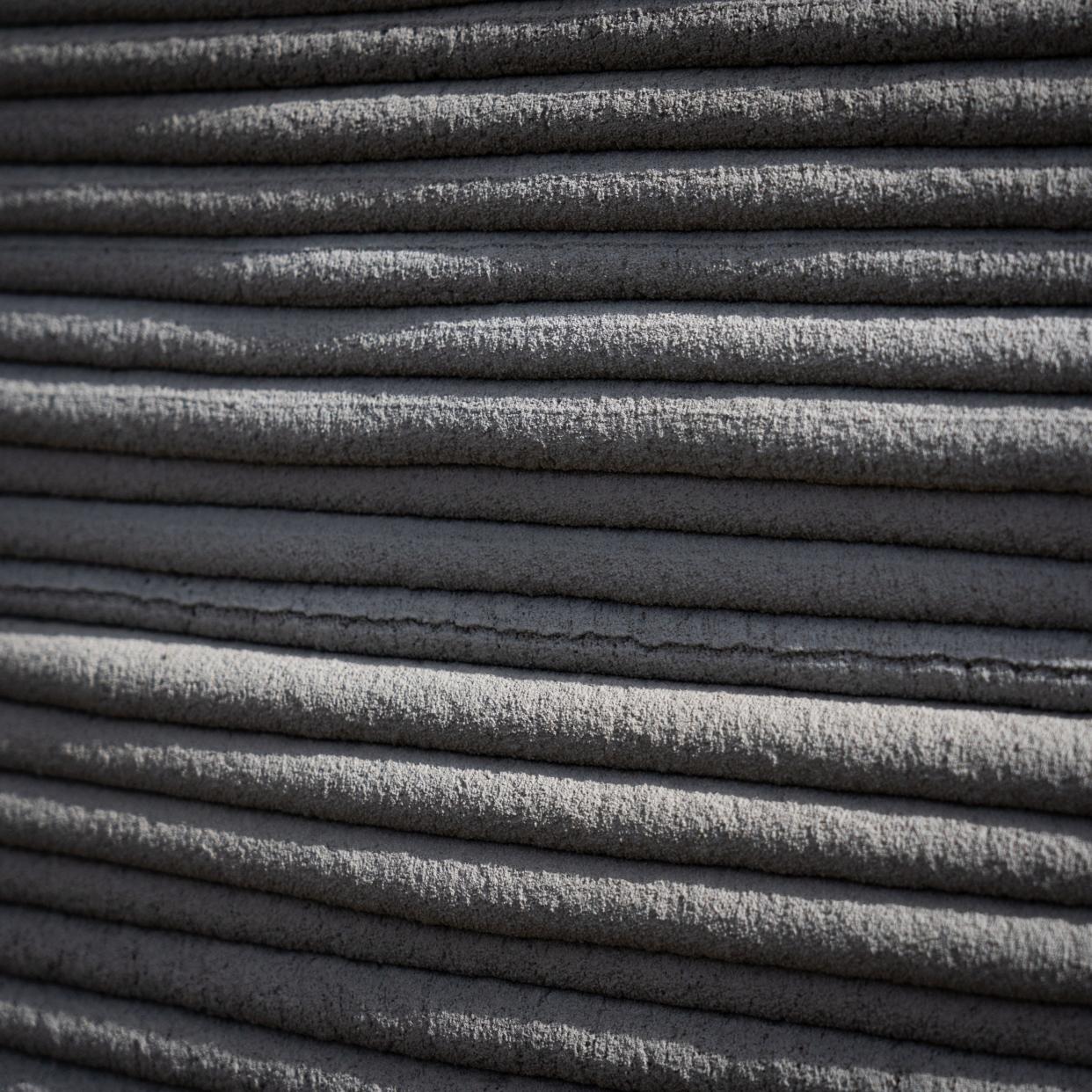
The tool allows users to design any type of home they can think of, by size, aesthetic and other elements. Vitruvius operates similarly to AI bots most people might be familiar with, such as Dall-E or ChatGPT, but the tool is more than just an image generator. The tool was fed hundreds of designs, including many by Bjorke Ingels Group, which has partnered with Icon on a number of projects.
The tool is designed to be used to dream up everything from traditional homes to those in the style of a “moon base”-inspired house in East Texas or a hobbit-style house. Each design comes with a floor plan and several options based on style and budget, and Ballard said, unlike other image generators, the AI tool designs homes that can exist within the parameters of real-world construction techniques.
“It’s not that hard to get an AI system to spit out images; it's harder coordinating all of the rest so it actually understands how building works,” Ballard said. “You had to teach (the AI tool) to be an architect.”
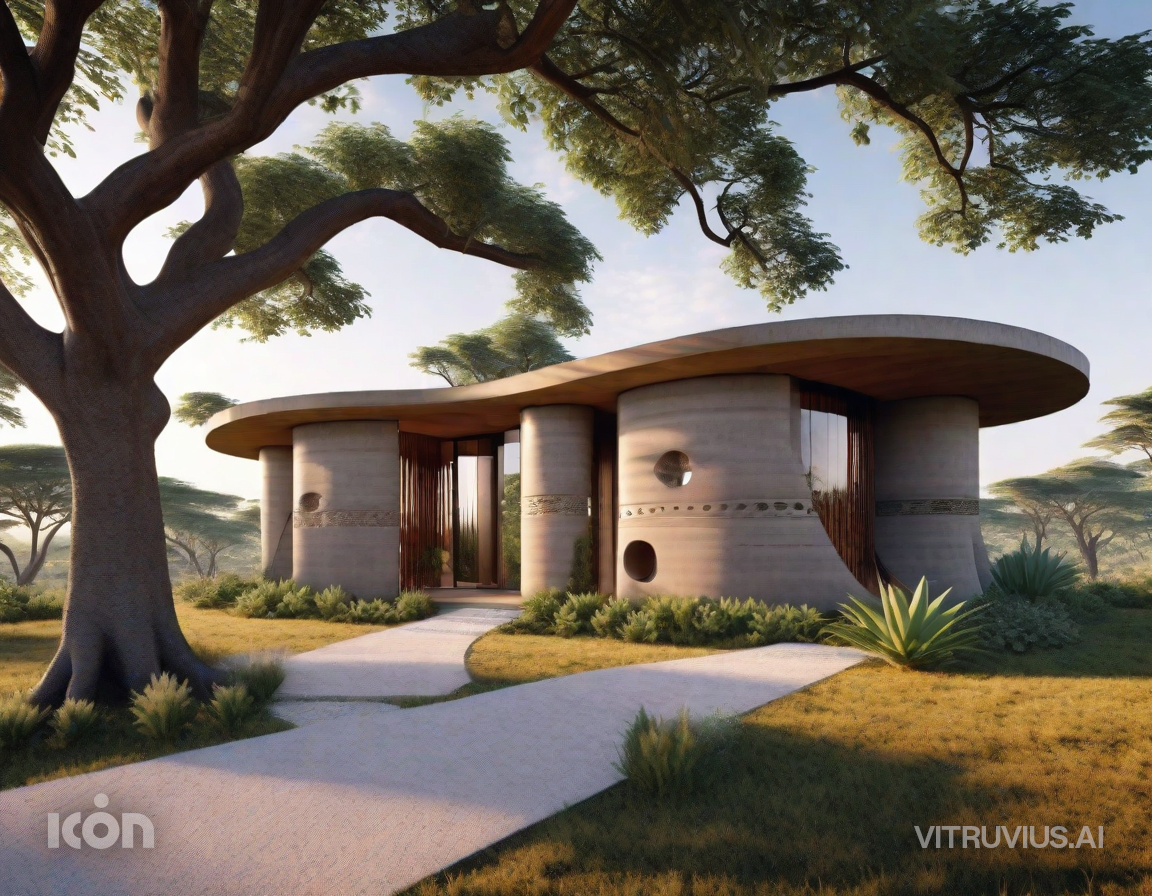
Ballard said the tool, which was built in about 18 months and will be free for now, will soon be able to adjust for schematics such as where rooms are or what color a doorknob is, as well as budget.
Ballard said the AI system was developed in part at the encouragement of OpenAI CEO Sam Altman. Ballard said the company always aimed to make a software tool, and eventually an AI tool, but after a conversation with Altman two years ago, decided to go straight into AI.
The new technologies come as Icon makes moves to scale up “very aggressively” and graduate from building hundreds of homes a year to thousands a year. Ballard said even more robots and innovation are likely to come in the company’s future as it works to make houses “twice as good at half the cost.”
“At the end state, I think it will be AI systems and robots top to bottom in the way we build,” Ballard said, adding that humans should only do what they want to. “The homes we are producing without these tools look inhuman and sterile. I think these tools will actually help our housing feel more human.”
This article originally appeared on Austin American-Statesman: Austin's Icon unveils new 3D printer, AI tool during SXSW 2024
